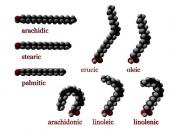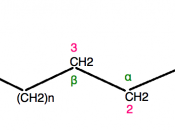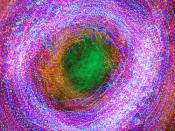This isnt written in paper form, but a relaible list of terms to help you orginize your thoughts, or clarify problems. I made an A in this Honors Biology!
I.Chemical foundations for the Cells
A.Organization of matter -(elements, compounds, mixtures)
Elements- materials that cannot be decomposed into substances with different properties.
Compounds-made of different elements in fixed and unvarying proportions
Mixtures-two or more elements present in varying proportions
1.Atoms and ions
a.atoms- smallest portion of an element that still retains properties of the element; contains protons, neutrons, and electrons
b.molecules- units of two or more atoms
c.atomic nucleus- core of atom that accounts for almost all its mass; (-)electrons move rapidly around it
d.atomic number- number of (+) protons
e.mass number- number of protons and neutrons
f.ion- an atom (or compound) that has gained or lost 1 or more electrons, thus is positive or negative in charge
2.Isotopes- vary in number of neutrons
a.radioactive isotopes- have unstable nuclei; breakdown over time
3.Arrangement of electrons
a. orbitals- regions of space around nucleus where electrons may be at any instant. Each contains 1 or 2 electrons
b. electrons closest to nucleus are at low energy levels
B. Bonds between Atoms
1. ionic bond- two ions bound by mutual attraction of opposite charges (Na+Cl-)
2. covalent bonds- atoms share electrons
a. non-polar- both atoms exert same pull on shared electrons
b. polar- one atom exerts more pull than the other on shared electrons; one atom is slightly positive, the other slightly negative; net charge zero
3. Hydrogen bond- an electronegative atom weakly attracts an H atom that is covalently bonded to a different atom
4. Hydrophobic interactions (not true bonds)
a. hydrophilic- substance is attracted to water molecules due to polar nature
b. hydrophobic- substance is repelled by water molecules...



Tabs
sry about the tabs, i will attach the word document ofr clarification
0 out of 1 people found this comment useful.